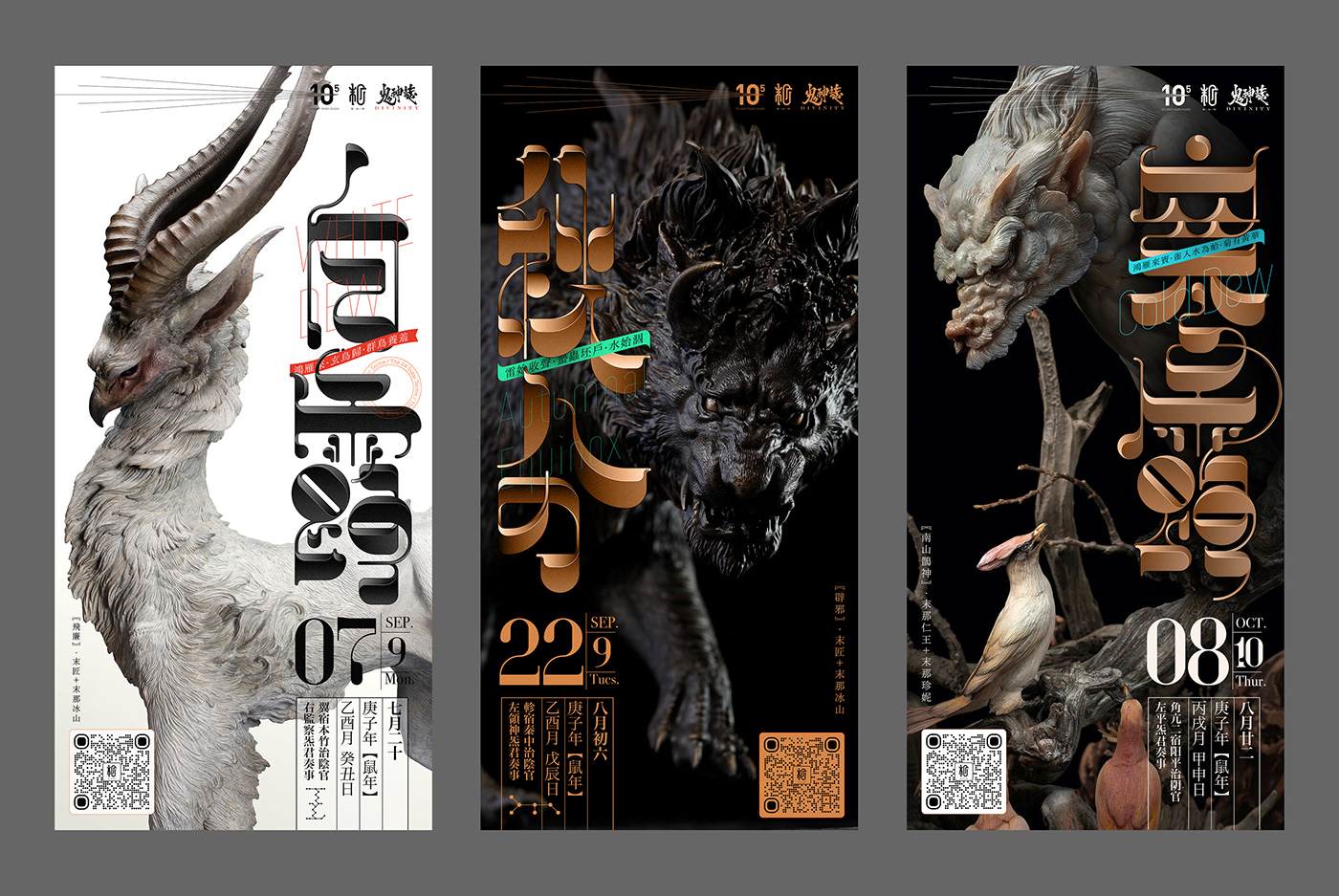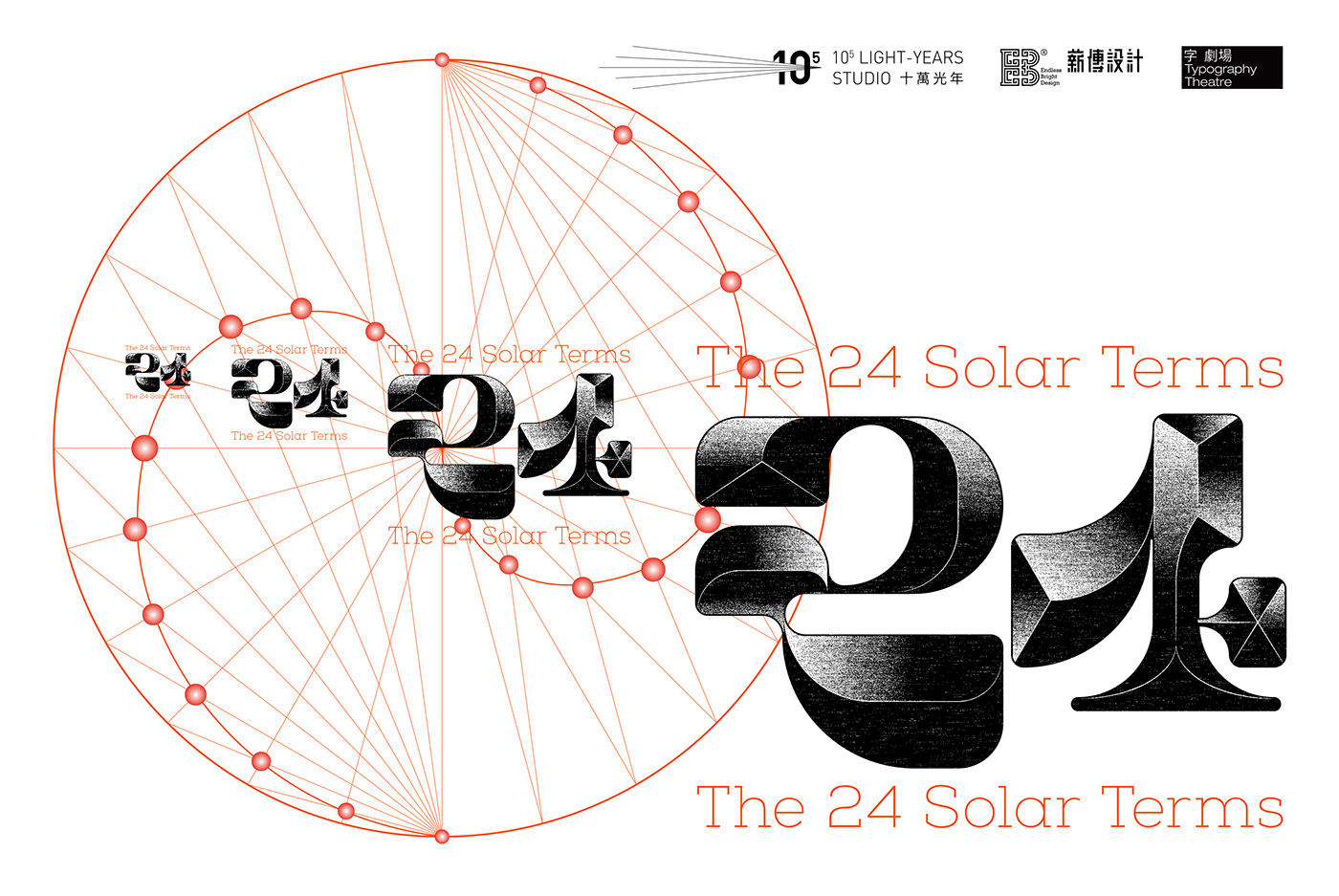
中国古代利用土圭实测日晷,将每年日影最长定为“日至”(又称日长至,即太极图中四象的太阴、长至、冬至),日影最短为“日短至”(又称短至、夏至)。在春秋两季各有一日的昼夜时间长短相等,便定为“春分”和“秋分”,人类各民族多有此四。在商朝时只有四个节气(四象,即四季),到了周朝时发展到了八个(八卦)。到秦汉年间[3],二十四节气已完全确立。公元前104年,由邓平等制定的《太初历》,正式将二十四节气订于历法,明确了二十四节气的天文位置。
二十四节气名称首见于《淮南子·天文训》,《史记·太史公自序》的“论六家要旨”中也曾提到阴阳(日月运行)、四时(四季)、八位(八卦)、十二度(时辰)、二十四节气等概念。汉武帝时,落下闳将节气编入《太初历》之中,并规定无中气之月,定为上月的闰月。
二十四节气每一个分别相应于太阳在黄道上每运动15°所到达之位置。二十四节气又分为12个节气和12个中气,一一相间。二十四节气反映了太阳周年视运动,所以其西历日期近乎固定,上半年的节气在6日,中气在21日,下半年的节气在8日,中气在23日,前后不差1~2日。12个节气也是干支纪月中的每个月支的起始之日,例如,立春为寅月之始,惊蜇为卯月之始。
二十四节气的命名反映了季节和气候的变化。立春、春分、立夏、夏至、立秋、秋分、立冬、冬至,又称八位,是区分公转运动对于地球影响的八个关键节点;雨水、惊蛰、清明、谷雨、小满、芒种、小暑、大暑、处暑、白露、寒露、霜降、小雪、大雪、小寒、大寒等十六个则反映了四季中更细微的气候变化。
A solar term is any of twenty-four (24) periods in traditional East Asian lunisolar calendars that matches a particular astronomical event or signifies some natural phenomenon.[1] The points are spaced 15° apart along the ecliptic[2] and are used by lunisolar calendars to stay synchronized with the seasons, which is crucial for agrarian societies. The solar terms are also used to calculate intercalary months in East Asian calendars;[3] which month is repeated depends on the position of the sun at the time.
According to the Book of Documents, the first determined term was the Winter Solstice, also named Dongzhi by Zhou Gong, while he was trying to locate the geological center of his kingdom, by measuring the length of the sun's shadow on an ancient timekeeper instrument named Tu Gui (土圭).[4] Then four terms of seasons were set, which were soon evolved as eight terms; until 104 B. C. in the book Taichu Calendar, the entire twenty-four (24) solar terms were officially included in the Chinese calendar.[5]
Because the Sun's speed along the ecliptic varies depending on the Earth-Sun distance, the number of days that it takes the Sun to travel between each pair of solar terms varies slightly throughout the year. Each solar term is divided into three pentads [ja] (候 hòu) (ja), so there are 72 pentads in a year. Each pentad consists of five, rarely six, days, and are mostly named after phenological (biological or botanical) phenomena corresponding to the pentad.
Solar terms originated in China, then spread to Korea, Vietnam, and Japan, countries in the East Asian cultural sphere. Although each term was named based on the seasonal changes of climate in North China Plain, peoples living in the different climates still use it with no changes.[6] This is exhibited by the fact that traditional Chinese, Hanja, and Kanji characters for most of the solar terms are identical.
On December 1, 2016, the Solar Terms were listed as UNESCO's Intangible Cultural Heritage.



二十四节气一直是我想要尝试创作的题材,2020年从“白露”节气开始了字体设计创作,我不想太常规,又不想太过分的实验,于是用优美的几何线条结合行书的笔画连带关系,来作为整个字形的架构,使得字形既有规律的几何构成感又有笔画间的连带转承的动感,将横笔和竖笔的比例关系拉大产生强烈的对比,从而让静中有动的感觉更强。在笔画中找出一条屋脊线,将结构一分为二体现明暗光影效果,这样字体中又加入了立体雕塑感,整体更浑厚。立体感的加入又带动了笔画承接中的空间感,给字形又增加了轻盈的漂浮感。设计过程中,力求同字不同形,比如“立春、立夏、立秋、立冬”中有4个“立”字,设计时刻意让它们在字形上都不一样。字体设计的乐趣无穷,用规律找变化,用变化隐藏规律。
这套字体设计还在进行中,对字体设计中细节方法会在我的公众号“倆嘛”中陆续更新,欢迎关注。
剩下的12个节气的设计会在2021年年末会完成,这期间会在GK手办一哥《末那》的节气传播图上首发,也欢迎关注。
欢迎接洽合作,转载请注明作者和出处,全部设计稿已在相关版权平台注册存档,拒绝抄袭!
鸣谢末那主理人四季对十万光年工作室的支持和帮助!感谢!
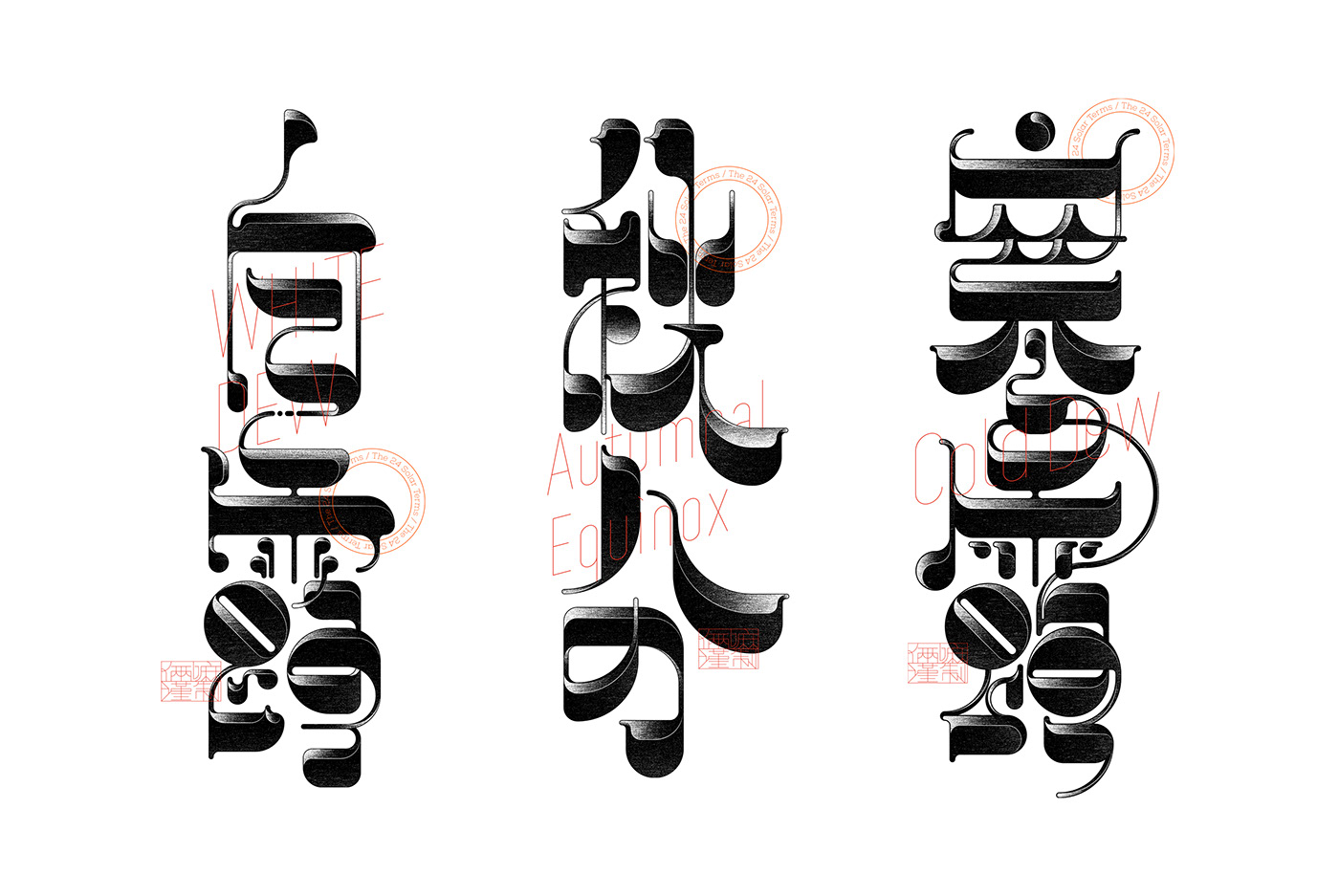
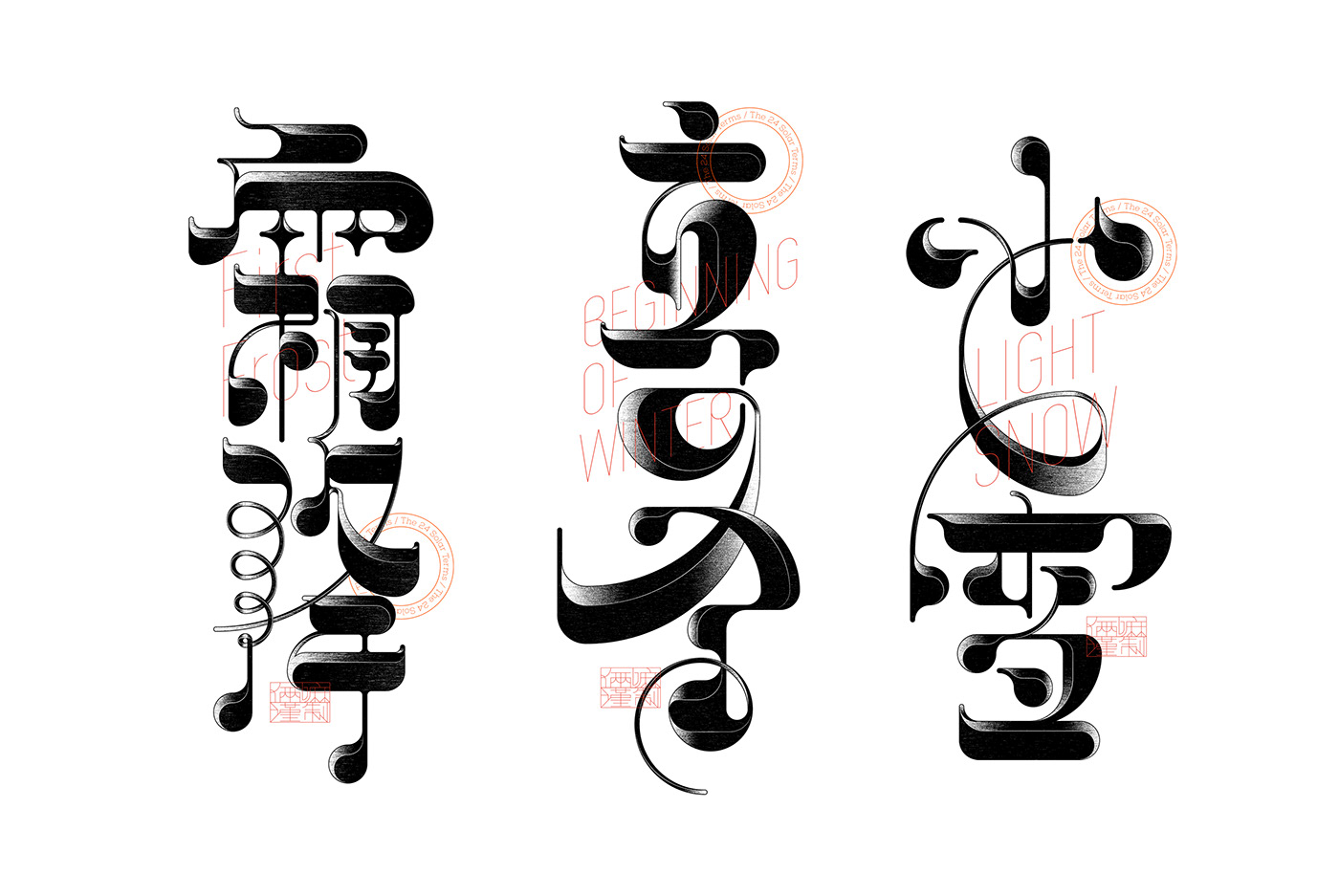
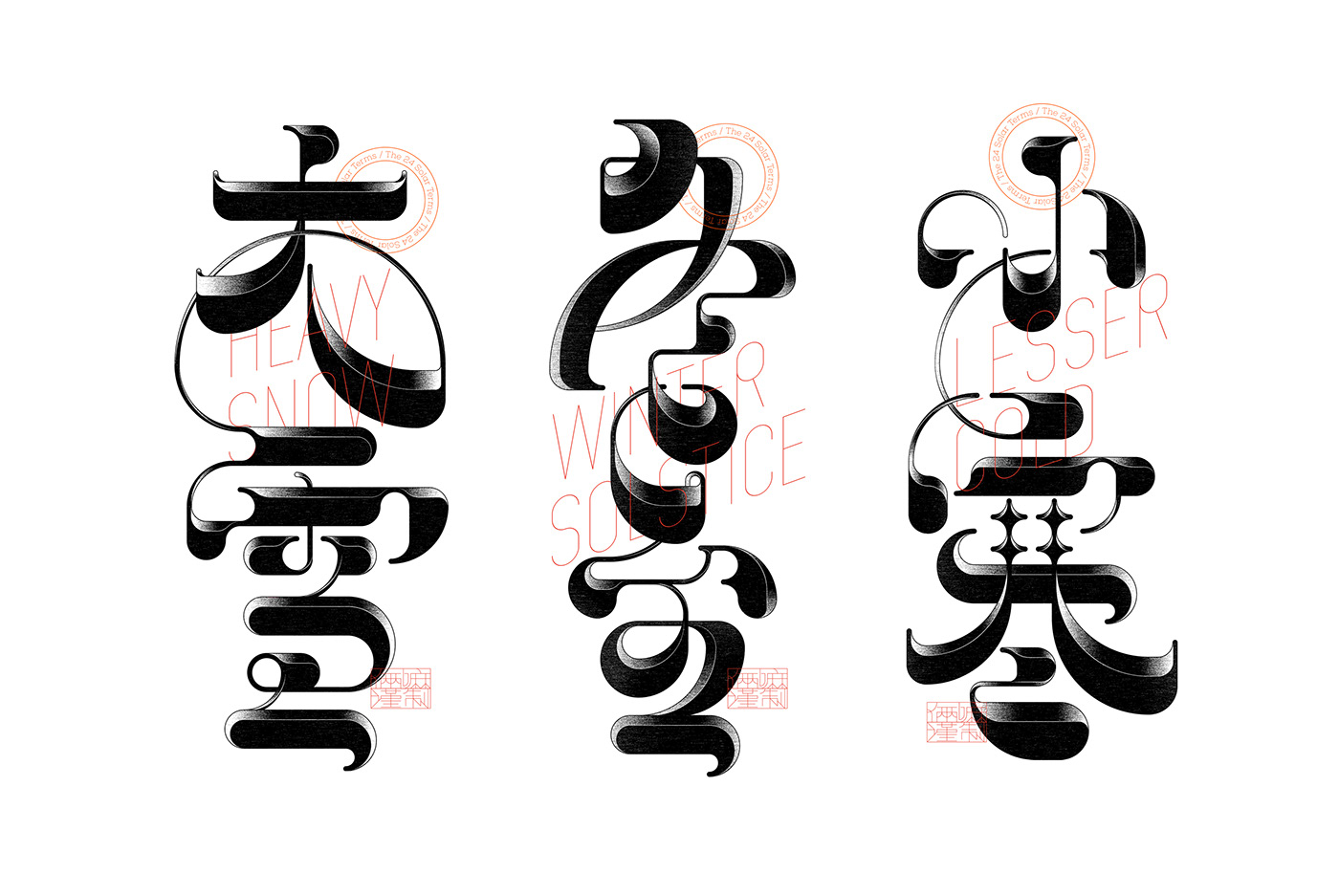
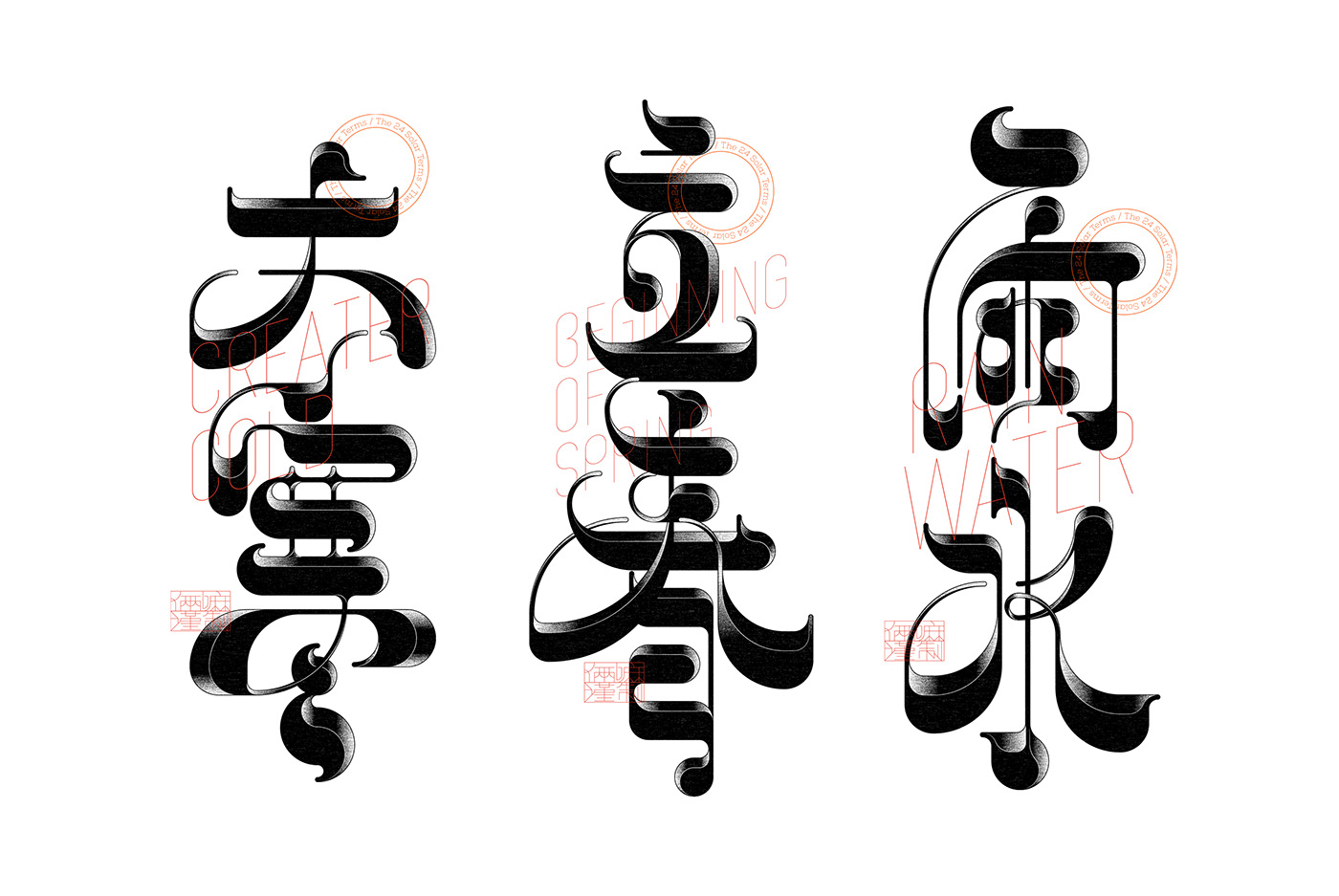
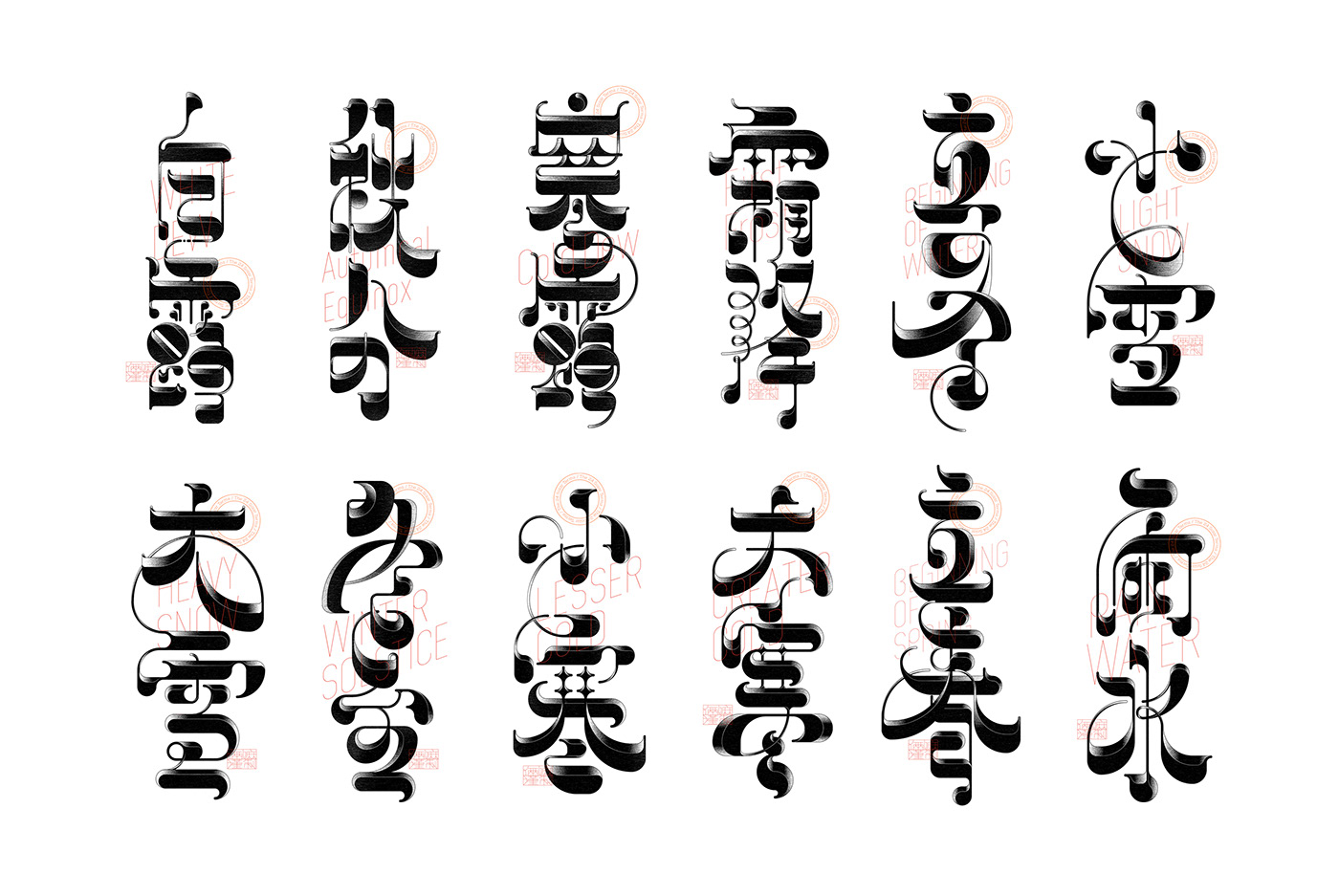













与末那合作,将字体设计呈现在节气传播图上,谢谢末那主理人四季对十万光年的帮助。
